Potato Virus: [Characteristics, Detection, Effects and Treatment]
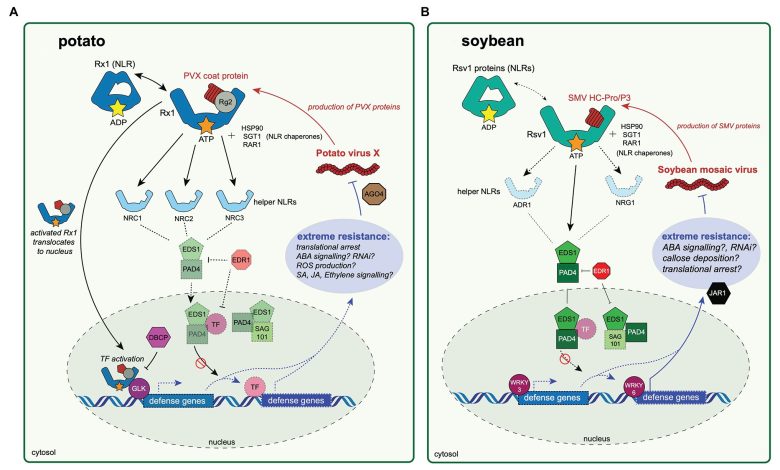
What is potato virus?
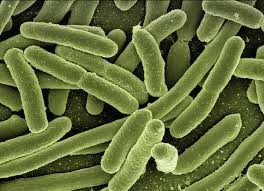 A wide range of diseases occur in potato cultivation, most of them of viral origin, which affect the production of this important tuber consumed daily by millions of people around the world.
A wide range of diseases occur in potato cultivation, most of them of viral origin, which affect the production of this important tuber consumed daily by millions of people around the world.
In this case alone, some 28 viruses have been identified that damage this nightshade, causing great economic losses in the agricultural sector, which it accuses.
However, there are various strategies for disinfection of the diseased plant, which can sometimes suffer up to 2 viruses simultaneously, being truly devastating for crop productivity.
In fact, the intensity of its effects depends on several factors that interact at the same time, among which the host cultivar and the acting virus stand out, as well as their races and the viral vectors involved in the process, in a given environment.
How can we identify the potato virus?
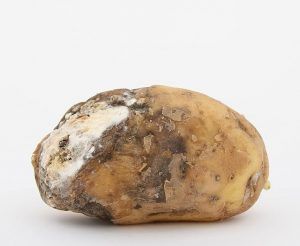 Among the viruses that affect potatoes, there are two that are especially severe: PLRV, virus X (PVX) and Potato virus Y or PVY.Let’s see how they manifest.
Among the viruses that affect potatoes, there are two that are especially severe: PLRV, virus X (PVX) and Potato virus Y or PVY.Let’s see how they manifest.
The potato leaf roll virus, yellow dwarf or Potato Leafroll Virus, scientific name in English (PLRV) belongs to the Luteoviridae family.
It is considered the worst viral disease that attacks potatoes worldwide and generates large losses, causing the loss of around 90% of the harvest.Among the most characteristic symptoms of this disease, we have:
- Curling of the upper leaves, at the height of the leaflets, which have a pale yellow color and erect growth. Although they can also turn pink, red and purple.
- Some cultivars can be infected without visible symptoms.
- In some tubers, an internal reticulate necrosis develops.
- Growth stops and secondary leaves of some cultivars are also curled, stiff and leathery, turning purple on the underside.
There is another subspecies, the andigena, which has a somewhat different reaction to disease. Let’s see what happens to him.
- Upper leaves are covered with a marginal and interveinal chlorosis, with an accentuated erect growth.
- The plant suffers from dwarfism.
- The bottom sheets are not rolled up.
- Aphid insects are to blame for the disease. They manage to affect the tubers and from there the disease spreads to the rest of the plant.
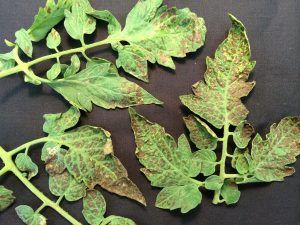 Among the insects responsible for the disease, essential protagonists are the green peach tree aphids .
Among the insects responsible for the disease, essential protagonists are the green peach tree aphids .
The virus takes between 24 to 48 hours to be transmitted by these tiny animals, because it first circulates through their digestive system and then comes out through their salivary glands.
Virus X, or simply PVX, belongs to the genus Potexvirus of the Flexiviridae family. Its impact on potato cultivars is not so strong, around 10% of total affectation.It is transmitted through infected tubers and by contact, not by the action of carrier insects.
The main manifestation is the appearance of mosaic-like spots on the leaves.But there are other symptoms, although many times there is no external evidence of the disease.Let’s see what the most common symptoms are:
- Appearance of chlorosis, mosaic and shrinkage of the leaves.
- Necrotic lesions on tubers.
- It interacts with other potato viruses, such as PVY and PVA, causing much harsher symptoms with the tuber, which impact the yield of the cultivar.
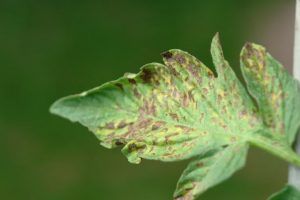 The severe potato mosaic virus, whose scientific name is Potato virus Y (PVY) belongs to the Potyviridae family, is another of the harshest diseases that cultivated potatoes suffer from.
The severe potato mosaic virus, whose scientific name is Potato virus Y (PVY) belongs to the Potyviridae family, is another of the harshest diseases that cultivated potatoes suffer from.
This evil manages to perpetuate itself through infected tubers, after the virus is transmitted by aphids or phytopathogenic insects that release the plant sap, in a non-persistent way.
Similarly, it can be transmitted through contaminated machinery and tools. But the main protagonists of the contagion are the aphids that usually attack agricultural crops.Among the symptoms that shed light on this virulent disease, we have:
- The leaves become rough, twisted, with the fold down the margin of the leaflets and grouped in a single sector.
- In the most severe cases, the leaf dries up completely.
- Plant suffers from dwarfism, does not grow.
- There is a tremendous necrosis in the vein of the leaflets, with severe spots on the leaves, which are rotting.
- The stem becomes streaked and also necroses.
- Premature or extemporaneous fall of the fruits.
There are, however, variants of this PVY virus. There is a common strain identified as PVYO that causes mosaic leaf mark symptoms. And the PVYC generates a punctate striation, while the PVYN type produces necrosis, but with less severe damage to the foliage of the plant.
Mixed infections often occur in the common and necrotic races of this virus, which is why the genomes intersect and end up producing hybrids at the level of this disease, identified as PVYN:Y and PVYNTN.
What plants does the potato virus affect?
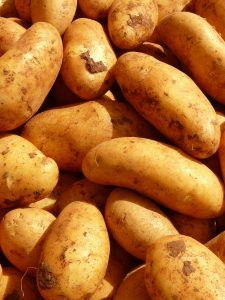 The situation can become very serious, because as potatoes are plants that multiply asexually, the virus can pass to the next clonal generation with the help of pieces of tubers used to ensure propagation.
The situation can become very serious, because as potatoes are plants that multiply asexually, the virus can pass to the next clonal generation with the help of pieces of tubers used to ensure propagation.
And other viruses of the same and different species can also be added.In other words, all species can be greatly affected.
This has resulted in a gradual degeneration of existing potato varieties, which have lost yield, vigor and less capacity to preserve tubers.
Consequently, broadly speaking, common characteristics are appreciated that indicate the presence of the viral load passed from one generation to another, such as:
- Shrinking of plants.
- Mosaic designs on the leaves.
- Deformations in leaves and tubers.
How to combat the potato virus?
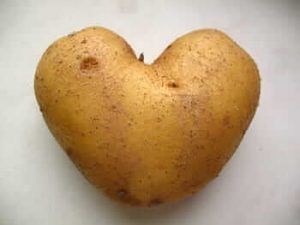 In the case of potato leaf roll virus or PLVR, there is a technique to cure crops.
In the case of potato leaf roll virus or PLVR, there is a technique to cure crops.
It consists of adding healthy plants, while the sick ones are eliminated, through the process of discarding the propagation of seeds, which must be certified to avoid these inconveniences.
Another technique used in the elimination of this virus consists of applying heat sessions to the tubers.
As for the severe potato mosaic virus, or virus Y (PVY), there is currently no effective treatment to exterminate it and save crops, so preventive measures must be taken to avoid infection of the cultivar.
What are the best products to eliminate potato virus?
There are systemic insecticides on the market capable of eliminating the propagation of aphids within the crop, although they are unable to exterminate the viruliferous aphids that come from other fields. It is best to apply prevention, with some of the following rules and measures:
- Use virus-free specimens, guaranteed in a trusted nursery and specimens resistant to these types of viruses in potatoes.
- Isolate contaminated animals, preventing them from approaching the crops, with the support of fences, meshes, bars, cones, among others.
- It is very important that crops and plantations are far from hedges and areas of vegetation plagued by insects such as aphids, flies, thrips, among other transmission vectors.
- Clean all tools and work materials used in the field, disinfecting them regularly.
- Eradicate infected plants mercilessly and grass that sprouts indiscriminately.
- Apply natural or chemical insecticides that eliminate transmission vectors, with the support of specialized personnel.

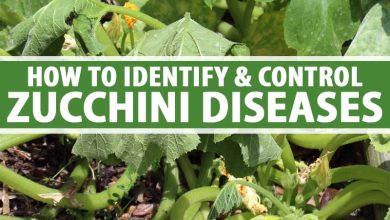
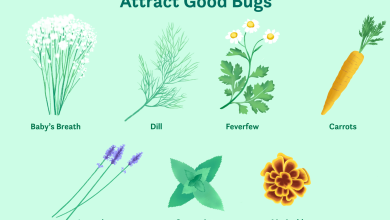
![Photo of Elephant Garlic: [Characteristics, Care, Planting and Reproduction]](https://www.complete-gardening.com/wp-content/uploads/2022/08/elephant-garlic-characteristics-care-planting-and-reproduction-390x220.jpg)
